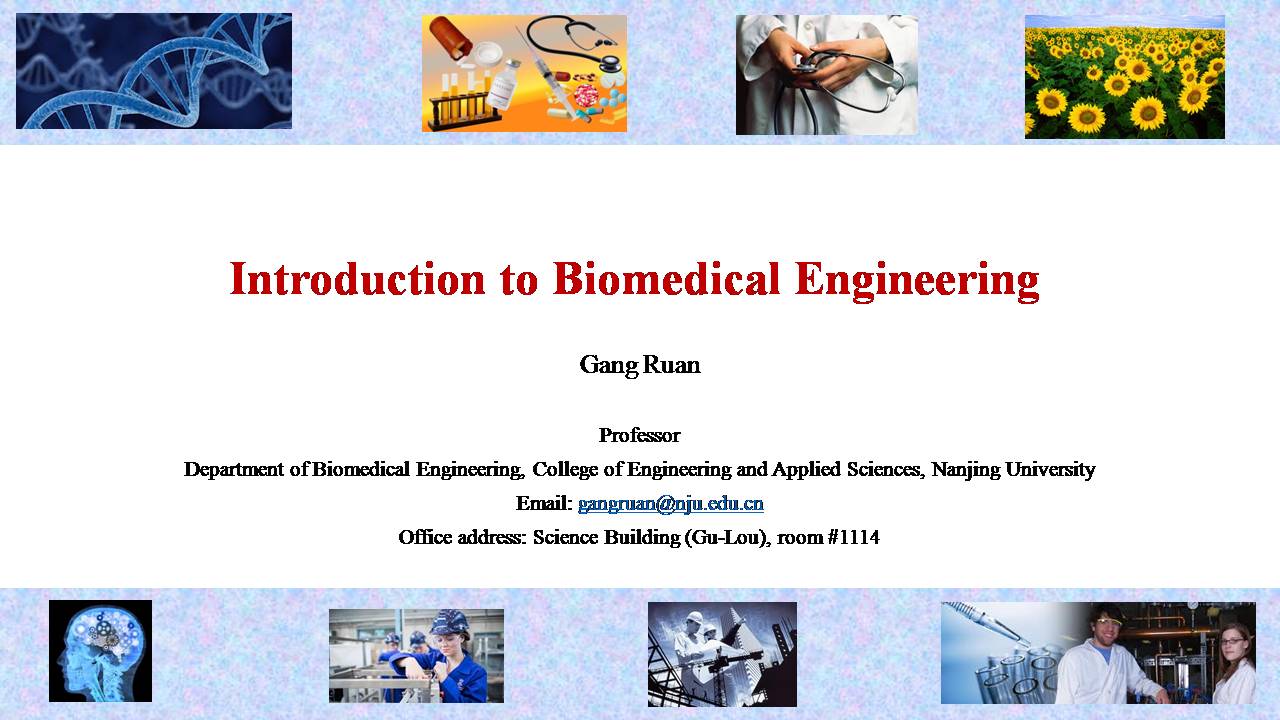Synopsis:
Biomedical engineering applies the principles of physical sciences and engineering to solve biomedical problems, either to tackle diseases or to understand how biological systems work. This course introduces the basic concepts and major fields of biomedical engineering.
The list of chapters is as follows:
Introduction
Biological Systems
Biomaterials
Biomechanics
Biotransport and Drug Delivery
Biomedical Imaging
Nanobiotechnology
Cancer
Toward the Real World
Prerequisites: high school physics, chemistry, biology, and mathematics.
Course objectives:
(1)Gaining basic knowledge of the discipline of biomedical engineering
(2)Developing interests on biomedical engineering
(3)Gaining basic knowledge on translation of new technologies to the market
Textbook:
Introduction to Biomedical Engineering, John Enderle, Joseph Bronzino, Academic Press, 2nd edition
The textbook will be supplemented by powerpoint slides.
About the Instructor of the course:
Dr. Gang Ruan is a professor of the Department of Biomedical Engineering, College of Engineering and Applied Sciences, Nanjing University (China). He is also an adjunct professor of the Department of Chemical and Biomolecular Engineering, the Ohio State University (U.S.A.). Dr. Ruan is a “Thousand Young Global Talents” awardee by the Chinese Central Government. He has published a number of high impact papers, and has successfully co-founded an innovation-based company in the US. Dr. Ruan can communicate fluently in both English and Chinese.


